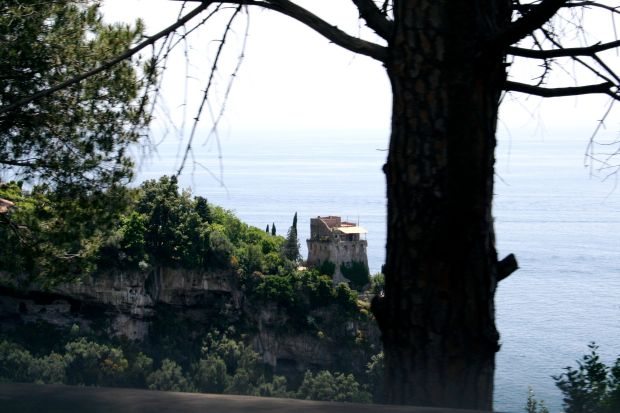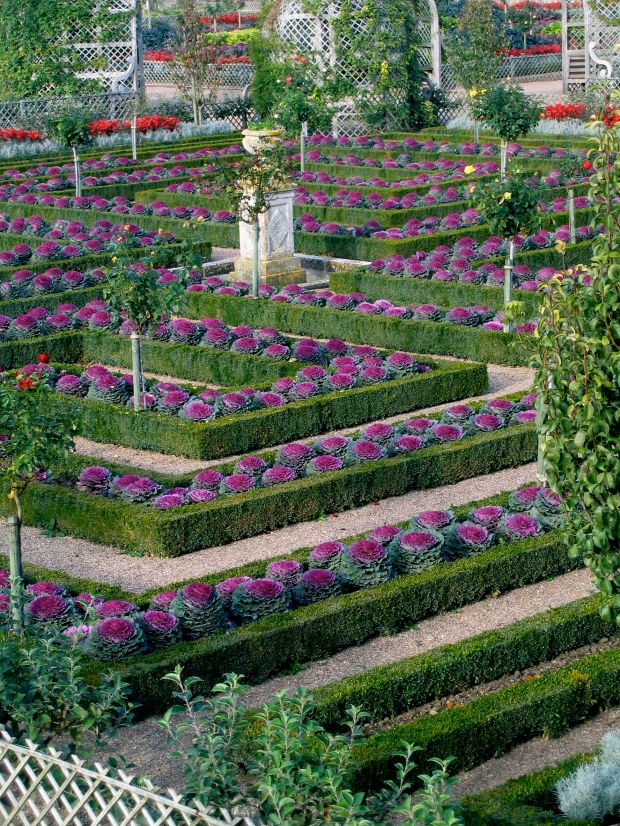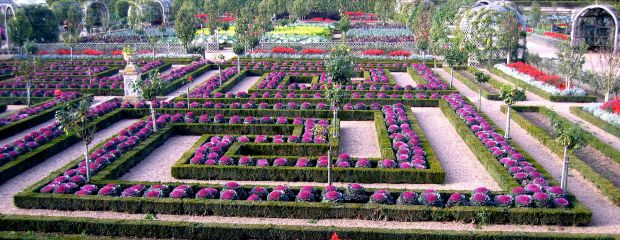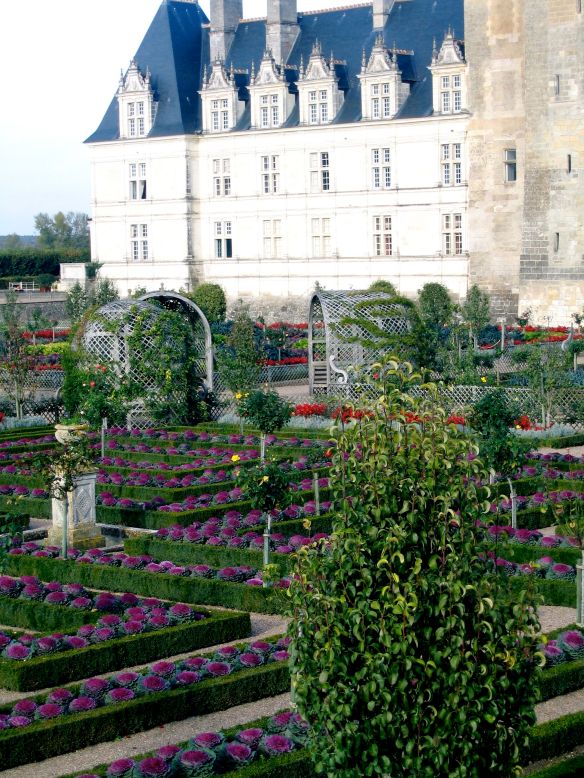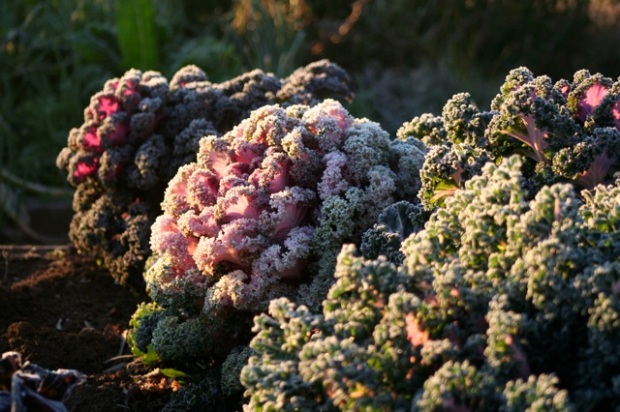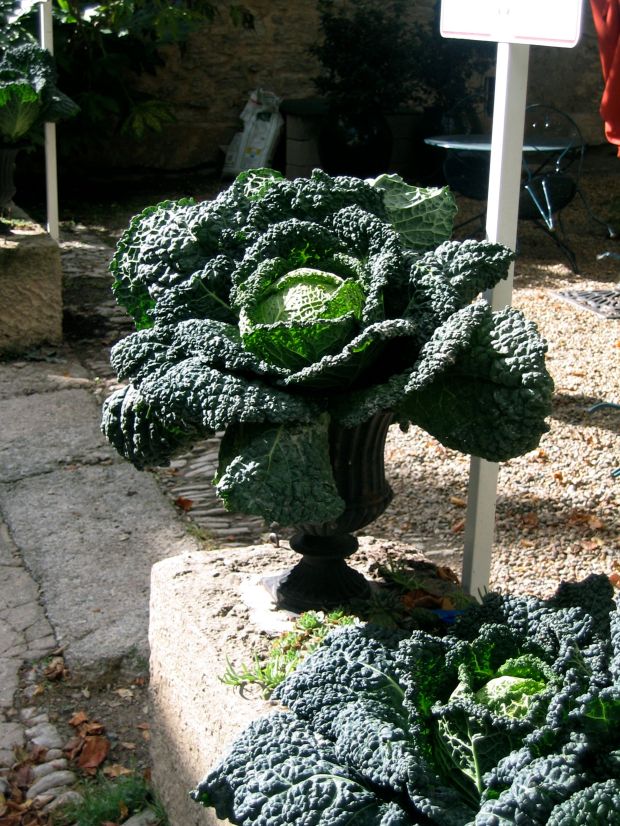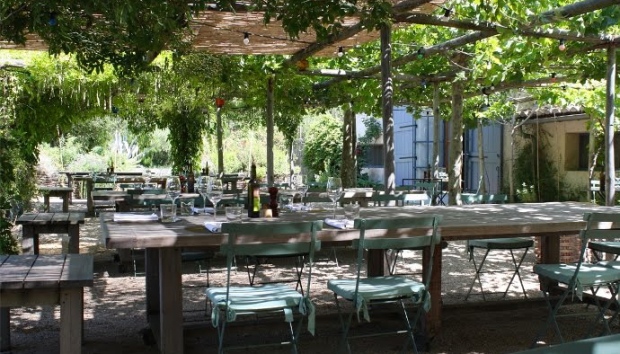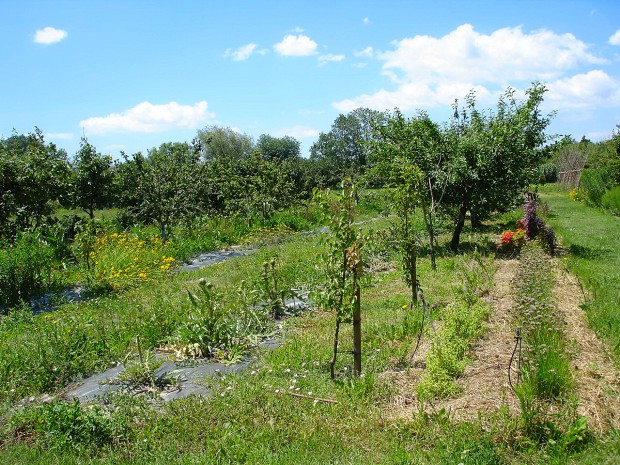 Though it is bucketing down as I write this, I have to still tell you that autumn is the best time to plant everything as it’s still warm enough for roots to grow into their new surroundings and the whole plant gets comfortably established and growing before next summer. So … put on your Drizabone and get out into the garden and get planting for a great spring spectacle! I’ve just planted lots of Tuscan kale (for my healthy next door shop neighbour Suzie Anderson to take home and add to her morning juice!), ornamental kale (not to eat, just to admire), artichoke, lettuce, spinach and ruby chard at The Potting Shed Kitchen Garden … and leek, broad beans, cabbage, peas and cauliflower at home in our vegie garden .. and can’t wait to harvest it over the next few months. In early spring the combo of baby broadbeans skinned and blanched, drizzled with oil and garlic butter and sprinkled with fresh mint on grilled foccacia is unbeatable!
Though it is bucketing down as I write this, I have to still tell you that autumn is the best time to plant everything as it’s still warm enough for roots to grow into their new surroundings and the whole plant gets comfortably established and growing before next summer. So … put on your Drizabone and get out into the garden and get planting for a great spring spectacle! I’ve just planted lots of Tuscan kale (for my healthy next door shop neighbour Suzie Anderson to take home and add to her morning juice!), ornamental kale (not to eat, just to admire), artichoke, lettuce, spinach and ruby chard at The Potting Shed Kitchen Garden … and leek, broad beans, cabbage, peas and cauliflower at home in our vegie garden .. and can’t wait to harvest it over the next few months. In early spring the combo of baby broadbeans skinned and blanched, drizzled with oil and garlic butter and sprinkled with fresh mint on grilled foccacia is unbeatable! 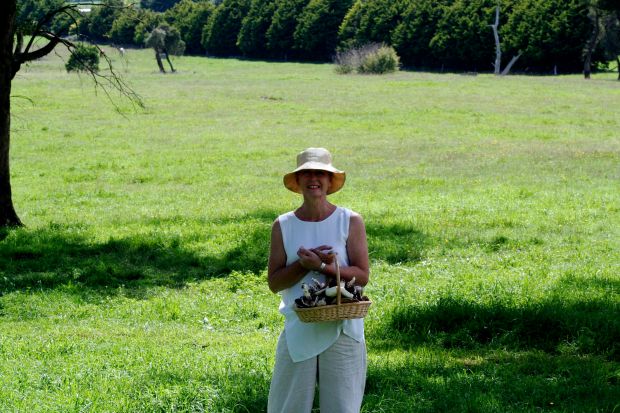 And if you’re lucky enough to be on acreage or have friends who will let you harvest their paddocks, autumn is mushroom season … and there’s nothing like freshly picked mushrooms sauteed in butter on toast for breakfast … or as my mother used to do, reduced right down till the flavour is really intense, and added to casseroles or as a side with bacon and eggs. Mmmm.
And if you’re lucky enough to be on acreage or have friends who will let you harvest their paddocks, autumn is mushroom season … and there’s nothing like freshly picked mushrooms sauteed in butter on toast for breakfast … or as my mother used to do, reduced right down till the flavour is really intense, and added to casseroles or as a side with bacon and eggs. Mmmm.
Vegie and herb seedlings to plant
Broad beans, broccoli, cabbage, cauliflower, leek, lettuce, onion, peas, radish, shallots, spinach, silverbeet. Herbs: Coriander, rocket, chives, lemon grass, marjoram, mint, oregano, parsley, rosemary, thyme.
Flower seedlings to plant
Now’s the time to plant alyssum, calendula, candytuft, carnation, cinneraria, cornflower, cosmos, daisies, foxglove, lobelia, marigold, nasturtium, nemesia, pansies, poppies, primula, snapdragon, sweet peas and viola. Most of which we have in stock at the moment at The Potting Shed.





